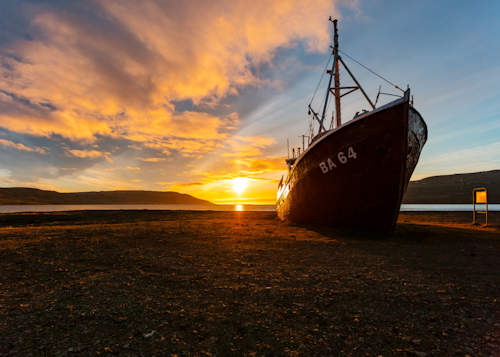How Shipping Wove the World Together

As we’ve sailed and traded across oceans, we’ve connected continents, cultures, and economies. By understanding the evolution of global shipping, we grasp not only the advancements in maritime technology but also the broader story of human progress and interconnectedness. Knowing this history underscores the importance of shipping in shaping our world today.
* Please send feedback/suggestions to editor @ shipuniverse.com
In this article, instead of delving into the current challenges facing ship owners, we look back to draw lessons from our history.
1. Early Voyages: Setting Sail on Wooden Vessels
Long before the hum of modern engines and the metallic sheen of contemporary vessels, the oceans were first tamed by wooden behemoths, each bearing the soul of the trees from which they were carved and the ambitions of the civilizations they represented.
The Phoenicians: Often heralded as the maritime merchants of antiquity, the Phoenicians sailed the waters of the Mediterranean with unmatched zeal. Establishing ports from the coasts of modern-day Lebanon to the far reaches of Spain, they not only traded goods like precious metals, wine, and the famed Tyrian purple dye but also stitched together a tapestry of cultures. Their nimble ships, refined through generations of shipbuilding expertise, became symbols of prosperity and interconnectedness in an age defined by regional kingdoms.
Polynesian Navigators: Far to the east, under the vast canopy of the Pacific sky, the Polynesians embarked on voyages that were nothing short of legendary. Guided by stars, winds, and the rhythmic pulse of the ocean, these navigators traversed thousands of miles on their outrigger canoes, discovering and populating islands from Hawaii to New Zealand. Their journeys, made without the compasses or maps that would define later eras of exploration, showcased human determination in its rawest form.
The Vikings: In the chillier waters of the North Atlantic, the Vikings carved their legacy. With their sleek and sturdy longships, designed with a blend of elegance and functionality, they ventured beyond their Nordic homes. These vessels, with dragon heads prowling their bows, raided the coasts of Europe, explored the icy landscapes of Greenland, and even reached the shores of North America, leaving an indelible mark on history with each oar stroke.
Fun Fact: While the Vikings are often associated with their warrior ethos, they were also astute navigators. They used an ingenious device known as the “sun compass” to navigate their long journeys. On days when the sun was obscured by clouds, they relied on this compass, which utilized the sun’s position even when it was hidden, guiding them through open waters with remarkable accuracy.
These early voyages laid the foundational routes for the intricate web of global shipping that the world would come to witness in the later ages.
2. The Age of Discovery: Flags, Spices, and New Worlds
The turning of the 15th century brought with it winds of change. As the Middle Ages receded, an insatiable curiosity gripped European nations. The promise of new lands, wealth, and the allure of the exotic began to overshadow the dangers of the open seas. It was an ambition, marked by fluttering flags of various empires, a hunger for spices, and the mapping of uncharted territories.
The Caravels: Symbolic of this age were the nimble and versatile caravels. With their triangular lateen sails and robust hulls, these ships were a marvel of maritime engineering. Vessels like the Santa Maria, which bore Columbus to the New World, showcased advancements that made Atlantic crossings feasible. Their agility allowed sailors to tack against the wind, explore river estuaries, and embark on voyages of discovery that would redraw the world map.
The Quest for Spice: If gold was the allure for many, spices were the siren call for others. With the fall of Constantinople in 1453 and the subsequent rise in the price of spices due to the monopolistic control of overland routes, maritime exploration became the beacon of hope. The Portuguese, led by pioneers like Vasco da Gama, and the Spanish, sought sea routes to India and the East Indies. Their expeditions, fraught with perils, revealed the fabled lands of the East, laden with spices like cinnamon, cloves, and nutmeg.
Mapping the Unknown: Beyond commerce, the Age of Discovery was a testament to human audacity. Ferdinand Magellan’s expedition, though he himself would not live to complete it, became the first to circumnavigate the globe, proving the world’s roundness beyond doubt. James Cook, centuries later, would further the legacy, charting the Pacific in detail, coming into contact with civilizations isolated for millennia and claiming territories for the British Crown.
Fun Fact: Spices were not just flavors; they were treasures more precious than gold. Black pepper, sometimes referred to as “black gold,” was especially valued. It was such a sought-after commodity that it served as a form of currency in some regions. The quest for these spices led to the discovery of new sea routes, reshaping global trade dynamics and geopolitics.
This era, with its grand tales of discovery, would set the stage for the centuries that followed, intertwining continents in a dance of trade, conquest, and cultural exchange, with ships and their indomitable crews at its very heart.
3. The Age of Empire: Ships of the Line and Colonial Endeavors
As the Age of Discovery waned, the world entered a new era marked by power struggles on the high seas, the pursuit of colonial ambitions, and the darker side of maritime history. With the rise of empires, ships became not just vehicles of exploration but also tools of domination and expansion.
Galleons and Clippers: Commanding the seas during this era were the imposing galleons and the swift clippers. Galleons, with their multiple decks and imposing firepower, became the floating fortresses for nations like Spain and Portugal. Laden with treasures from the New World, these ships would often face pirates and privateers, leading to legendary naval battles. On the other end of the spectrum were the clippers – the greyhounds of the sea. Sleek and fast, they revolutionized trade, especially in the lucrative tea industry, ensuring that products like tea from China reached European markets at unparalleled speeds. These ships, in their respective domains, became instrumental in the race for global dominance among colonial powers.
The Triangular Trade: One of the grimmer chapters of maritime history revolves around the transatlantic slave trade. A triangular route emerged: European goods were shipped to Africa in exchange for enslaved individuals, who were then transported under horrific conditions to the Americas. The ships would then return to Europe laden with American produce like sugar, tobacco, and cotton. This system, which persisted for centuries, stands as a testament to the darker side of global shipping, wherein ships became vehicles of immense human suffering.
Fun Fact: Among the clippers, one ship stands out – the Cutty Sark. Launched in 1869, this ship became legendary for its races against time. Specifically, it was known for its epic races against other ships to transport the season’s first tea from China to London. These races weren’t just about commercial advantage; they were about prestige, pride, and the demonstration of naval prowess. Today, the Cutty Sark rests as a museum ship in Greenwich, London, a tangible relic of the age it once dominated.
The Age of Empire saw ships at the heart of global dynamics, be it through trade, conquest, or the unfortunate transportation of human lives. It was an era that underscored the multifaceted role of maritime endeavors in shaping human history – for better and for worse.
4. The Steam Revolution: Changing the Pace of Global Shipping
The whiff of burning coal, the chug of engines, and the hiss of steam marked a pivotal era in maritime history. The 19th century witnessed a transformational shift from wind-touched sails to steam-powered giants, revolutionizing trade, travel, and the very essence of maritime voyages.
From Sails to Steam: The transition wasn’t immediate, but the hybrid ship SS Savannah took a bold first step. Launched in 1818, she made history as the first steamship to cross the Atlantic. Though largely sailing under wind power, the voyage demonstrated the potential of steam propulsion. Within decades, the maritime world began embracing steamships, and the effects were profound. Travel times plummeted; what once took months could now be achieved in weeks or even days. The unpredictable nature of winds no longer held sway over ship schedules, giving rise to consistent and reliable maritime trade and travel.
The Titanic Legacy: With the dawn of the 20th century, steamships weren’t just about efficiency; they symbolized opulence and human ambition. Ships like the RMS Titanic were floating palaces, showcasing the pinnacle of luxury and engineering. However, the tragic sinking of the Titanic in 1912, after colliding with an iceberg, jolted the world. This disaster underscored the perils of overconfidence and the unpredictable nature of the sea. Its legacy led to significant advancements in maritime safety, from improved ship designs to international agreements on sea travel, ensuring that ships carried enough lifeboats for all passengers and standardized iceberg monitoring.
Fun Fact: As steamships became the backbone of global shipping, coal became their lifeblood. This necessitated coal bunkering stations at strategic points across the world’s oceans. These stations, often located on remote islands or key coastal points, played a pivotal role in determining shipping routes. Ships would chart their courses based on where they could refuel, effectively making these bunkering stations the “pit stops” of the maritime world.
The advent of steam power ushered in an age of unprecedented change in global shipping. From transforming the pace of trade and exploration to reshaping how humanity viewed ocean travel, the steam revolution stands as a testament to human innovation and the ever-evolving relationship with the seas.
5. Modern Marvels: Containerization and the New Age
Stepping into the latter half of the 20th century, the shipping industry was on the cusp of yet another revolutionary change. As technology advanced and globalization’s drumbeat grew louder, there emerged a need for more efficient, streamlined, and scalable methods of transporting goods across the world’s oceans.
The Birth of Container Shipping: Malcolm McLean, a trucking entrepreneur, envisioned a future where cargo could move seamlessly between trucks, trains, and ships without continuous loading and unloading of its contents. In 1956, his vision took form with the maiden voyage of the SS Ideal X, a modified oil tanker carrying 58 containers from Newark to Houston. This marked the birth of container shipping. McLean’s simple yet groundbreaking idea eliminated vast amounts of labor, reduced pilferage, and increased efficiency manifold. Standardized containers meant goods could be packed once and transferred effortlessly between different modes of transport. This innovation has since become the backbone of international trade, shrinking the world in ways previously unimaginable.
Mega-Ships: As global trade volumes swelled, so did the ships that carried them. Enter the age of mega-ships, floating giants with the capacity to transport staggering volumes of cargo. Leading this league are vessels like the Triple-E class container ships, marvels of maritime engineering. Stretching over 400 meters in length and capable of carrying more than 18,000 containers, these vessels are both a testament to human engineering prowess and a symbol of our interconnected world.
Fun Fact: The orchestration of loading and unloading a mega-container ship is a sight to behold. It’s often compared to a well-choreographed dance. Huge cranes, some towering over 130 feet, swing into action, picking containers off ships with pinpoint precision. It’s a 24/7 operation, often under tight schedules. For a mega-ship, loading or unloading can involve moving a container every 30 seconds. This intricate ballet not only showcases technological advancement but also emphasizes the importance of logistics in the modern world.
The modern era, with its emphasis on speed, efficiency, and scale, has redefined global shipping. Containerization and the rise of mega-ships underscore the indomitable human spirit’s constant quest to innovate, adapt, and connect in an ever-evolving world.
6. Future Horizons: Sustainable Seas and Technological Waves
In the 21st century, the maritime industry is at a crossroads, balancing environmental concerns with new technology to shape its future.
Eco-Ships: Responding to the global clarion call to mitigate climate change, the maritime realm is stepping up. Eco-ships are not just concepts but emerging realities. Designed to dramatically minimize their carbon footprint, these vessels showcase a myriad of innovations: advanced hull designs for minimized water resistance, energy-efficient engines, cleaner-burning fuels, and even ingenious methods like air bubble lubrication systems. This latter innovation releases a curtain of bubbles to reduce drag between the hull and water, optimizing fuel consumption.
Harnessing Nature: Wind and Solar Power: Beyond engines and fuels, there’s a rekindled appreciation for the age-old power of wind. Modern vessels are exploring advanced sail systems, akin to the sails of yore but driven by cutting-edge materials and engineering. Concurrently, the vast open spaces on ship decks offer the perfect canvas for solar panels. The amalgamation of wind and solar technology in ship propulsion is not only a nod to sustainability but also a tip of the hat to maritime traditions.
With these developments on the horizon, the maritime industry is not just looking at economic efficiencies but is firmly anchoring its future in sustainable and innovative practices.
Additional Resources
Books:
- “The Box: How the Shipping Container Made the World Smaller and the World Economy Bigger” by Marc Levinson.
- This book provides a comprehensive history of how the shipping container transformed global trade.
- “Seapower: A Guide for the Twenty-First Century” by Geoffrey Till.
- Till delves into the importance of naval power and how it’s shaping geopolitics in the modern era.
- “Ninety Percent of Everything: Inside Shipping, the Invisible Industry That Puts Clothes on Your Back, Gas in Your Car, and Food on Your Plate” by Rose George.
- George provides an inside look at the modern world of shipping, shedding light on this often-overlooked industry.
- “Sea and Civilization: A Maritime History of the World” by Lincoln Paine.
- A comprehensive maritime history, covering everything from ancient seafaring civilizations to modern naval power.
Websites:
- World Shipping Council (WSC) – www.worldshipping.org
- This organization represents the global liner shipping industry. Their website provides a wealth of information on shipping statistics, safety, environmental initiatives, and more.
- The Maritime Executive – www.maritime-executive.com
- An online maritime magazine covering various topics from shipping news, maritime safety, to innovations in the industry.
- International Maritime Organization (IMO) – www.imo.org
- The United Nations specialized agency with responsibility for the safety and security of shipping and the prevention of marine pollution by ships. It’s a great source for regulations, safety protocols, and maritime environmental initiatives.
- Seatrade Maritime News – www.seatrade-maritime.com
- Offers a mix of breaking news, insightful opinion pieces, and more in-depth features on key industry issues.

Do you have a Maritime Product or Service that may be of interest to Shipowners? Tell us about it here!
Do you have feedback or insights? Please reach out to editor @ shipuniverse.com



